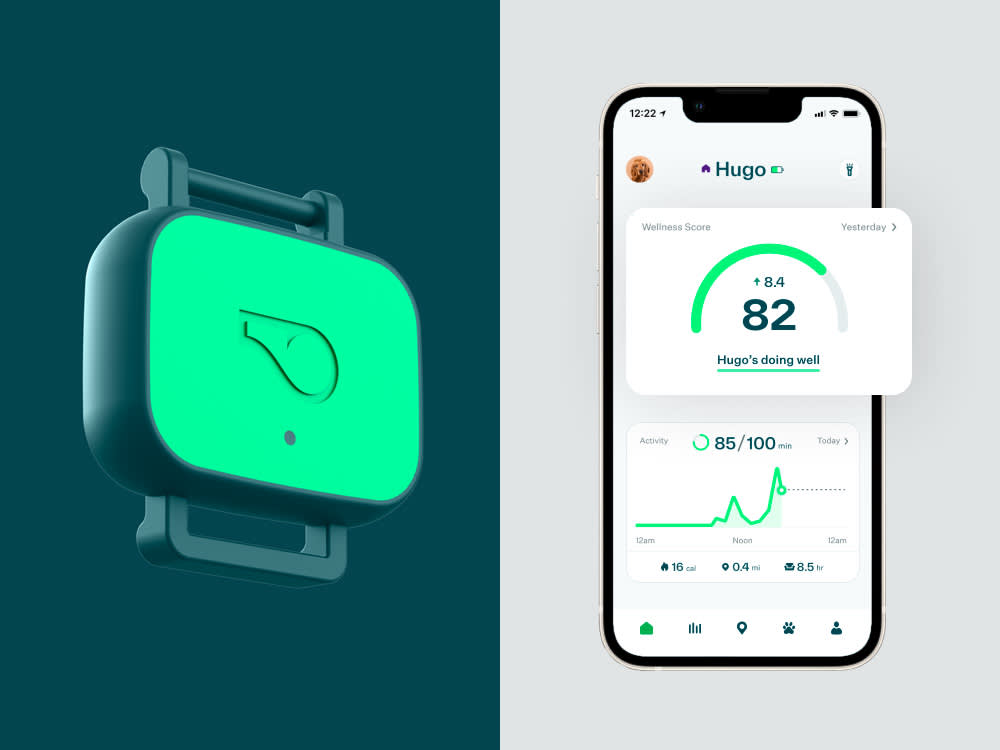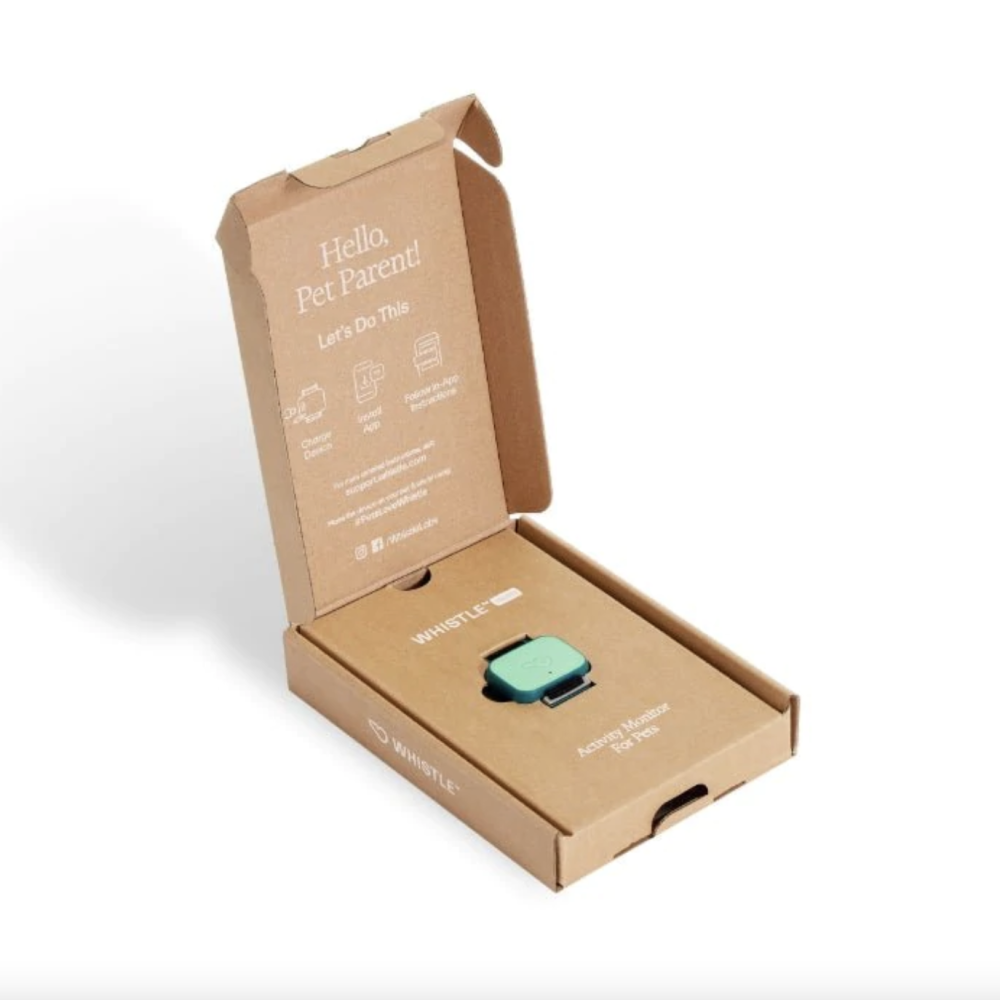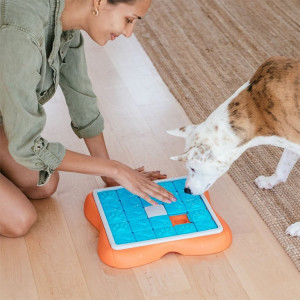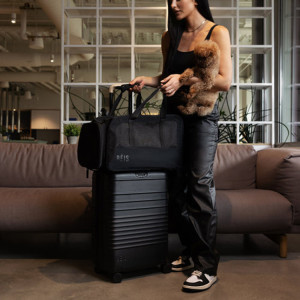Whistle’s New Smart Collar Is Giving Pets a Voice
Your dog can’t tell you if they don’t feel well, but the cutting edge AI behind this health tracker can

share article
Twenty years ago, the idea of a device you wear daily that monitors your health and allows you to send messages instantly with a tap of the wrist would seem like science fiction. Today, Apple Watches and similar smart timepieces are so common that they’re rarely acknowledged by anyone but the wearer. Millions of people casually walk around with these devices every day, sending texts the way their ancestors checked the time – all while having their heart rate monitored. In fact, several studiesopens in a new tab have concluded smartwatches can even reduce the risk of stroke by detecting irregular heartbeats.
Of course, if it works for us it should work for those we love most so Whistleopens in a new tab took this concept and brought it into the pet space with their smart devices. The device’s advanced artificial intelligence (AI) – which can analyse daily behaviours for personalised, proactive, preventative care – is truly state-of-the-art. It’s led by the expertise of The Pet Insight Projectopens in a new tab, an award-winning team of vets and data scientists who’ve studied the medical records and behaviour of over 100,000 dogs to determine how certain actions relate to health.
It all stems from one fundamental truth, says Dr Aletha Carson, veterinarian and Senior Manager of Data and Clinical Studies at the Pet Insight Project: “Pet parents want to know how to take care of their pets.” Whistle tracks every movement, each scratch, lick and sip, to determine if they’re abnormal or excessive in any way that might suggest a risk is apparent. “Once pet parents are provided with that actionable data, then they can go ahead and seek what the best care is for their pets,” she explains.
It may initially seem obvious but we can’t monitor our pets 24/7 in the way you would for your own health. If a person feels ill, they will (hopefully) seek medical attention to suss out the root cause. Whistle gives pets the same ability. “Unlike human patients or people, your pet can’t tell you if they don’t feel well or if they need something. And really what we’re doing, especially with these alerts, is giving your pet a voice,” says Scott Lyle, Head of The Pet Insight Project.
All activity – eating, sleeping, drinking, scratching and licking – is tracked in your personalised Whistle app, which features machine-learning algorithms to monitor habits and project possible allergies or chronic conditions. What makes all this information possible is an accelerometer device that sits within each device. “It takes a lot of measurements on a very small scale,” explains David Allen, Project Manager at Whistle Labs. “I’m talking 150 different measurements every second. So it’s really fine-tuned. A human would never be able to interpret what’s going on in this accelerometer data.”
So it is solely a job for what 100-plus years of dystopian cinema would have us believe is the next evolution of life on this planet: artificial intelligence. Beyond possibly inadvertently aiding the robot apocalypse, Whistle is really only focused on one thing – bettering the health and wellness of your pet. According to Lyle, “Just like having a child, the emotional reward of caring for your pet is so important. And that’s really what it’s all about at the end of the day.”
*Whistle is a Kinshipopens in a new tab brand. We think their products are pretty cool, but we don’t play favourites. So, when a product has family ties, we’ll be real with you.

Sean Zucker
Sean Zucker is a writer whose work has been featured in Points In Case, The Daily Drunk, Posty, and WellWell. He has an adopted Pit Bull named Banshee whose work has been featured on the kitchen floor and whose behavioral issues rival his own.
Related articles
![Dog with martingale collar and girl with blonde hair]() opens in a new tab
opens in a new tabWhy Your Dog Needs a Martingale Collar
It prevents escape, works as a training tool and is recommended by dog rescue workers
![Woman and white dog playing with puzzle.]() opens in a new tab
opens in a new tab6 Genius Interactive Dog Toys From Nina Ottosson
These puzzle toys are made to help you bond with your pup
![A stylish young woman wearing a white jumpsuit walking her Dalmatian dog with a light blue hands-free leash made by the Fable brand]() opens in a new tab
opens in a new tab7 Hands-Free Dog Leads for Running (or Texting)
Because you never want to drop that flat white
![A woman standing next to a suitcase with a dog carrier on top while holding her dog.]() opens in a new tab
opens in a new tabThe Best Dog Carriers For Planes, Trains and Automobiles
Whether you’re driving across the UK or flying internationally, your pup can comfortably tag along






